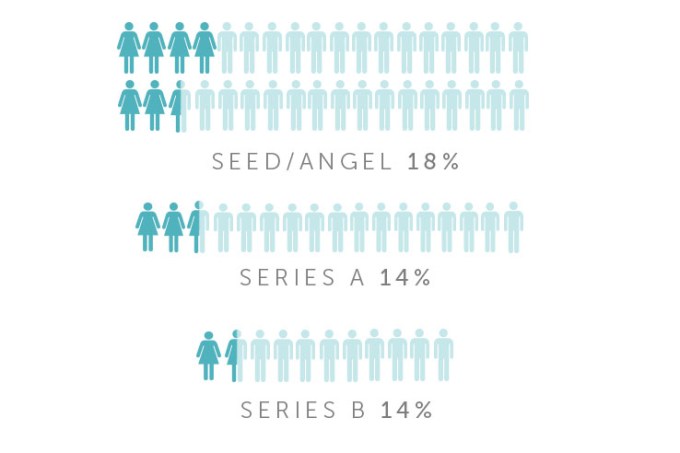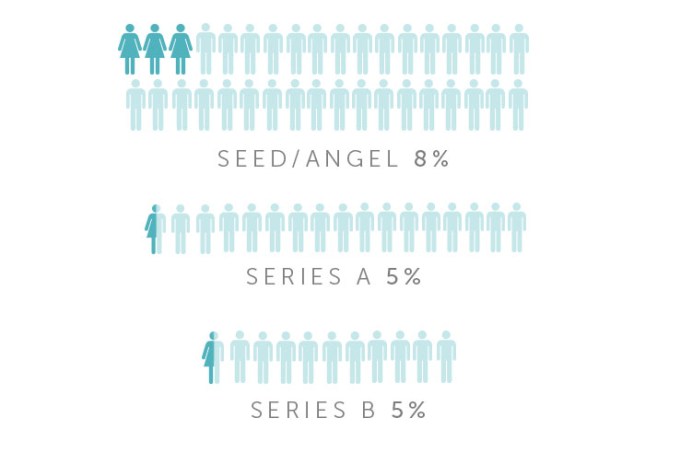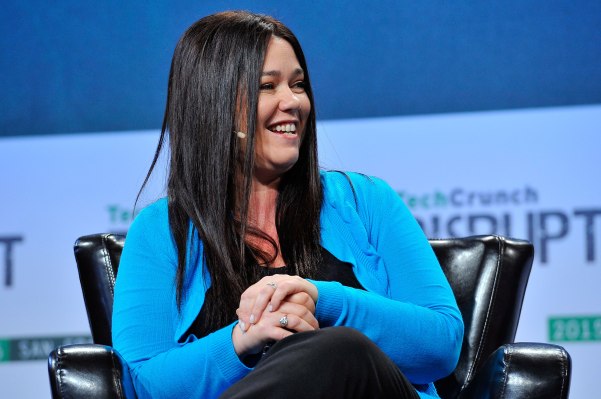Building a tech company from the ground up and having it succeed is an ambitious goal. Doing that as a female founder and CEO is another beast, entirely.
When my co-founders and I decided to start Zola, I didn’t think for one second about any possible challenges unique to being a female founder and CEO. We saw a problem with the wedding registry industry and decided to solve it. We set our BHAG (big hairy audacious goal) and knew we’d tackle the problems on our path as they arose.
Straightforward, right? But when you stop and look at what it takes to be a successful female founder in tech — the numbers I mean — it’s enough to ward off women from even trying.
New CrunchBase data shows that 555 tech companies raised a Series B in 2015; however, only 5 percent, or 30, of those 555 had female founder/CEOs. I feel proud and lucky to be one of them. While one could be depressed by such low representation, I’m encouraged by five major ways our industry improved for female entrepreneurs in 2015.
The first female founder/CEO was inducted into the unicorn club
Aileen Lee, the woman who brought us the word “unicorn” in 2013 to represent the scarce group of billion-dollar tech companies, finally announced the first female-CEO unicorn in July, 2015: Adi Tartako, CEO and co-founder of Houzz. (Lee called out two unicorn companies with female CEOs. However, since the date of Lee’s post, there has been news that one of those companies, Gilt Groupe, is to be sold at a reported $250 million. This leaves us with one.)
Going from zero to one female founder/CEO in the unicorn club is a small step, but I believe it’s a step nonetheless. We see the domino effect in tech all the time: “I’m the Uber for X,” brands will say, associating themselves with a well-known unicorn. All it takes is one great example for people to believe they, too, can do bigger things than they originally imagined.
At Zola, we’re inspired not just by Tartako, but also by the people who believed in her vision and supported her along the path to unicorn status. For example, early VC investor Paul Hsiao’s belief in Adi, her company, and the opportunity to harness the power of female consumers in big markets, was a major reason we chose to partner with Paul and Canvas Ventures during Zola’s Series B round this year.
Pinterest publicly unveiled diversity hiring goals
When Pinterest wasn’t seeing the diversity improvements it had hoped for following their own Tracy Chou’s fantastic “Where are the numbers?” initiative, the founders decided to set real goals and share them publicly. The community applauded Pinterest for leading by public example and continuing to support the pioneering work of Tracy Chou.
In 2016, the real test becomes whether sharing the goals actually accelerated the progress.
Facebook, Spotify and Netflix announced new parental leave policies
Facebook extended its parental leave policy to four months of paid leave, making the announcement on the same day Mark Zuckerberg declared he was taking two full months of paternity leave. Zuckerberg, realizing the importance of this time for both parents, wrote, “Studies show that when working parents take time to be with their newborns, outcomes are better for the children and families.”
Spotify also announced a six-month paid parental leave, and Netflix proclaimed unlimited paid leave for both moms and dads.
#ChoosePossibility project
Sukhinder Singh Cassidy launched the excellent #ChoosePossibility project to change the dialogue about women in tech.
Just looking at the long list of women who started or lead tech companies makes it clear to a female founder that she’s not alone, and that running a company as a woman is possible. It’s also wildly apparent that any VC who thinks there aren’t many female-founded tech companies isn’t looking very hard…
More female-founded companies have matured into later funding stages
In 2013, I was the only female CEO who raised a Series A round of financing in New York City. In 2014, there were 12. As more women decide to start and lead tech companies, and these companies grow and mature, we see greater gender diversity in the leaders of bigger startups that raise later-stage capital.
New 2015 analysis, powered by CrunchBase, shines a light on the representation of female founders and female founder/CEOs as companies progress through fundraising stages.
The data shows there was a strong increase in the representation of female founders raising Series A capital for their startups, from 10 percent in 2014 to 14 percent in 2015.
There has never been a better time to be a woman in tech who dreams of building a big company.
However, the percentage of female founders and female founder/CEOs who raise at the Series A and Series B stage is still significantly lower than at the Seed stage. The numbers suggest it gets harder for female founders as they move through the funding funnel (see graphics below). When you look at the representation of female investors in later-stage funds, it seems to be the same story of two steps forward, one step back.



I’m optimistic we’ll see continued progress for women in tech in 2016. With public-stated goals urging senior tech executives to improve diversity (à la Pinterest), generous parental leave policies and increasing examples of valued female-founded companies to lead the way, there has never been a better time to be a woman in tech who dreams of building a big company.
There will always be subtle and not-so-subtle barriers to minorities in tech, but 2016 will be better because 2015 broke the ice. As Rey, the ground-breaking new female character in Star Wars: The Force Awakens, says, “You will remove these restraints and leave this cell with the door open.”
That is all any of us ask. In 2016, let’s all continue to walk, run and kick down those doors.
